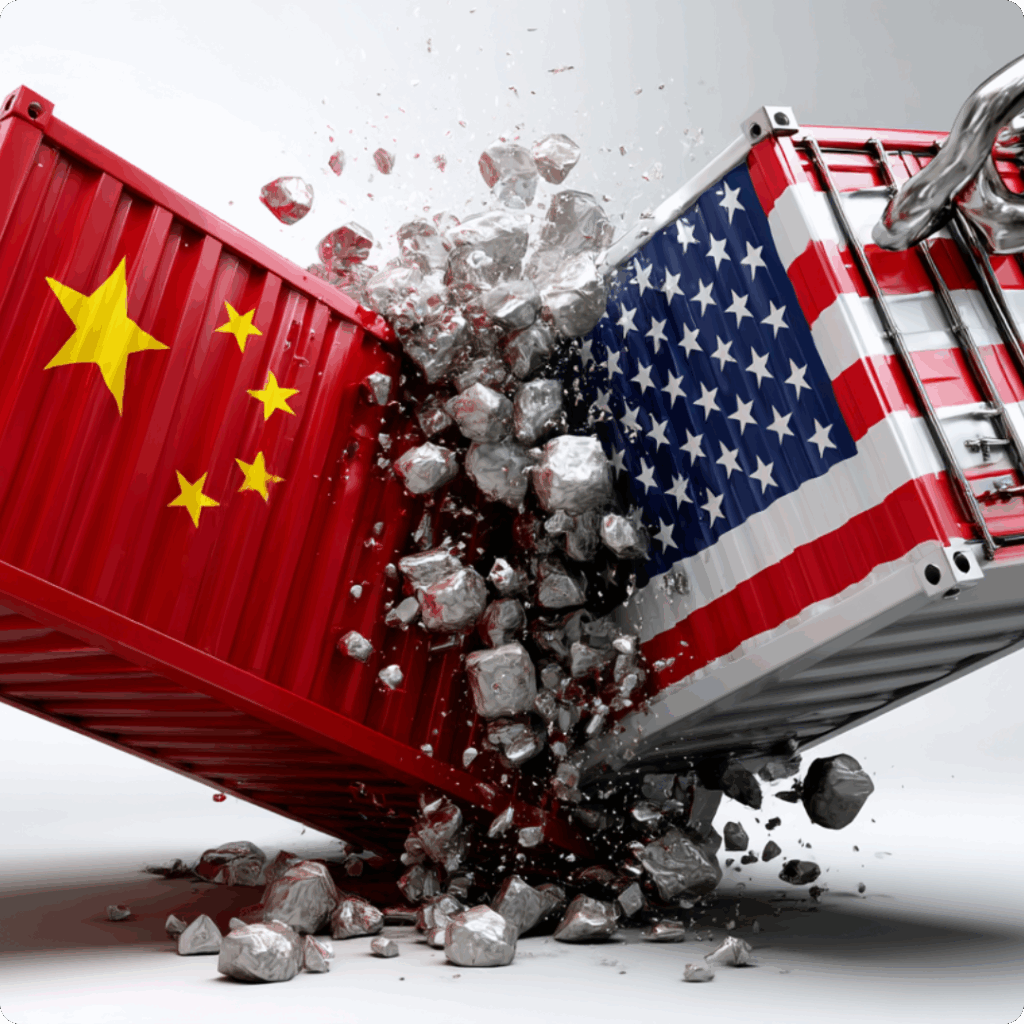Sometimes, the best opportunities in ecommerce aren’t planned—they’re dropped in your lap. One of those moments is here.
With the recent announcement of a 90-day pause on certain tariffs for imports from China, ecommerce brands just got a rare and valuable window of breathing room. After years of price instability, supply chain headaches, and shrinking margins, this temporary pause could offer just enough runway for smart brands to reset, reload, and relaunch with a stronger position than ever.
But here’s the thing: 90 days go fast.
That’s why what you do right now—not at the end of the pause—can shape your profitability, your customer experience, and your growth trajectory for the rest of the year.
Let’s break down what this tariff pause really means and how ecommerce leaders should be thinking if they want to turn this window into something long-term and revenue-positive.
What the 90-Day Tariff Pause Means (In Real Terms)
 The policy news may be full of jargon—exemptions, exclusions, temporary rollbacks—but the takeaway for ecommerce brands is refreshingly clear:
The policy news may be full of jargon—exemptions, exclusions, temporary rollbacks—but the takeaway for ecommerce brands is refreshingly clear:
For the next 90 days, certain Chinese imports will avoid the added costs that tariffs have piled on in recent years.
For businesses that source products, packaging, or raw materials from Chinese manufacturers, that can mean immediate cost savings of 10%, 15%, even 25% depending on the item.
It’s a short-term change, but one with ripple effects that impact pricing, inventory planning, marketing strategy, and overall profit margins.
That said, this isn’t about celebrating a “win” and doing nothing. This is a strategic reset. If brands treat this like a window of opportunity (not a vacation), the next 90 days can help build a buffer for whatever tariff policies come next.
Step 1: Run Your Numbers—Now, Not Later
Before doing anything else, ecommerce operators need to get granular with their financials. Recalculate your landed costs with tariffs removed and re-project margins. This isn’t just about feeling better about your margins—it’s about putting hard data behind decisions you may have been delaying.
Ask yourself:
– Can I now profitably restock SKUs I previously paused?
– Does this open the door for faster turnaround times with my supplier?
– Can I afford to order deeper or explore bundling options?
Even if you don’t act on all of these options, clarity here is power. With accurate margin snapshots, you can be aggressive where it makes sense—and conservative where volatility still looms.
Step 2: Reinvest in Inventory Agility
 If you’re in ecommerce, you already know inventory is more than a warehouse number—it’s a cash flow decision, a shipping promise, and a conversion lever.
If you’re in ecommerce, you already know inventory is more than a warehouse number—it’s a cash flow decision, a shipping promise, and a conversion lever.
With tariff pressure eased for now, many brands will default to “buy more inventory.” But we’d recommend focusing instead on inventory agility.
That means:
– Working with suppliers to break orders into smaller, more frequent batches
– Exploring diversified sourcing for your most at-risk SKUs
– Building out fulfillment timelines that account for the potential return of tariffs in 90 days
This is also a great time to experiment with low-risk SKUs you’ve been hesitant to test. If you can trial a new product line or seasonal variant with lower sourcing costs, now’s the time.
Step 3: Refresh Pricing & Promotions—Before Your Competitors Do
 One of the biggest levers in ecommerce is pricing. But with tariffs eating into margins, many brands were forced into uncomfortable price increases that customers definitely noticed.
One of the biggest levers in ecommerce is pricing. But with tariffs eating into margins, many brands were forced into uncomfortable price increases that customers definitely noticed.
With tariff relief in place, you’ve got options.
But don’t just blindly lower prices to compete—be strategic. Consider testing temporary price reductions on high-volume or high-margin products. Pair that with time-sensitive bundles or free shipping thresholds to drive up average order value.
Better yet? Build promotions around value messaging, not discounts. Something like:
“Thanks to recent import relief, we’re able to pass some savings along—limited time only.”
This keeps you competitive without creating a race to the bottom. Remember: Customers don’t just buy on price—they buy on perceived value. Smart messaging here can do double-duty.
Step 4: Supercharge Ad Spend Efficiency
 If your cost of goods is dropping—even temporarily—your ROAS is getting an artificial boost. Use this time to revisit paid media campaigns and see what you can scale profitably.
If your cost of goods is dropping—even temporarily—your ROAS is getting an artificial boost. Use this time to revisit paid media campaigns and see what you can scale profitably.
Here’s where to look:
– Top-of-funnel campaigns: If CAC was too tight to justify prospecting campaigns before, this margin cushion might make those numbers work.
– Retargeting flows: Tariff relief means better margins on the same traffic—so revisit your cart abandon and retargeting flows with fresh urgency messaging.
– Channel expansion: Been holding off on testing Pinterest, TikTok, or YouTube? With better margins, you’ve got a better test budget.
If you’re using 1st-party data (which you should be), this is a prime opportunity to refresh your segmentation and feed your best-performing audiences with optimized creative.
Remember, this isn’t just about spending more—it’s about getting more from what you’re already spending.
Step 5: Upgrade CRO Tactics While You Have Breathing Room
 Tariff relief doesn’t just affect your sourcing and pricing. It also gives you room to reinvest in site experience—and Conversion Rate Optimization is one of the highest-leverage places to do that.
Tariff relief doesn’t just affect your sourcing and pricing. It also gives you room to reinvest in site experience—and Conversion Rate Optimization is one of the highest-leverage places to do that.
If you’ve been hesitant to run A/B tests, refresh landing pages, or update your PDPs, now’s the time to dive in. Small boosts in conversion can stack on top of improved margins for serious gains.
Here are some low-hanging CRO upgrades worth testing:
– New copy or visual layout on high-traffic product pages
– Streamlined mobile checkout UX
– Product bundling options on cart pages
– Scarcity or time-based urgency elements for seasonal SKUs
And don’t forget post-purchase flows—what happens after checkout still affects repeat rate and LTV.
This is the kind of stuff that gets deprioritized when margins are tight—but right now, you’ve got room to experiment and profit.
Step 6: Communicate Clearly (Internally & Externally)
 Internally, make sure everyone on your team—from procurement to paid media to customer service—knows what this tariff pause actually changes. You don’t want teams making decisions on outdated margin assumptions.
Internally, make sure everyone on your team—from procurement to paid media to customer service—knows what this tariff pause actually changes. You don’t want teams making decisions on outdated margin assumptions.
Externally, don’t be afraid to bring customers into the conversation. Use this moment to show transparency and build trust. For example:
– Let customers know you’re working to keep prices fair
– Frame savings as a “pass-along” benefit to your community
– Use email and social content to highlight “what’s new” thanks to this margin window
Customers want to know you’re paying attention—and even more, they want to feel like they’re part of the win.
Step 7: Plan for the Tariffs to Return
This might be the most important step of all.
Yes, the tariff pause is helpful. Yes, the savings are real. But assuming this relief is permanent would be a major mistake.
Use this 90-day window to plan as if the tariffs are coming back—because they very well might. That means:
– Revisiting alternative suppliers (domestic or near-shore)
– Evaluating SKUs that may no longer be profitable under full tariff load
– Locking in favorable terms with manufacturers now, while you have leverage
– Building scenarios into your P&L projections that include tariff reinstatement
In short: Use the present moment to future-proof your business.
What’s the Real Opportunity Here?
 If ecommerce brands use the next 90 days wisely, this isn’t just about getting a temporary margin bump. It’s about:
If ecommerce brands use the next 90 days wisely, this isn’t just about getting a temporary margin bump. It’s about:
– Re-optimizing unit economics
– Testing campaigns you’ve been putting off
– Building a more resilient supply chain
– And reconnecting with customers in a meaningful way
In a space as volatile as ecommerce—where change is the only constant—windows like this are rare. Whether it’s 90 days or 30, what you build in the pause can keep paying dividends long after tariffs are back on the table.
Final Thought: Don’t Wait to Be Reactive—Lead Proactively
Markets will shift. Policies will change. Competition will catch up.
But right now, your brand has an edge.
So instead of sitting on the sidelines waiting to see what happens next, use this moment to sharpen every part of your ecommerce engine—from supply chain to ad strategy to conversion flows.
Because while the tariff pause might be temporary, the momentum you build from it? That can last a whole lot longer. If you are ready to take advantage of this window of opportunity – contact our team to get started!